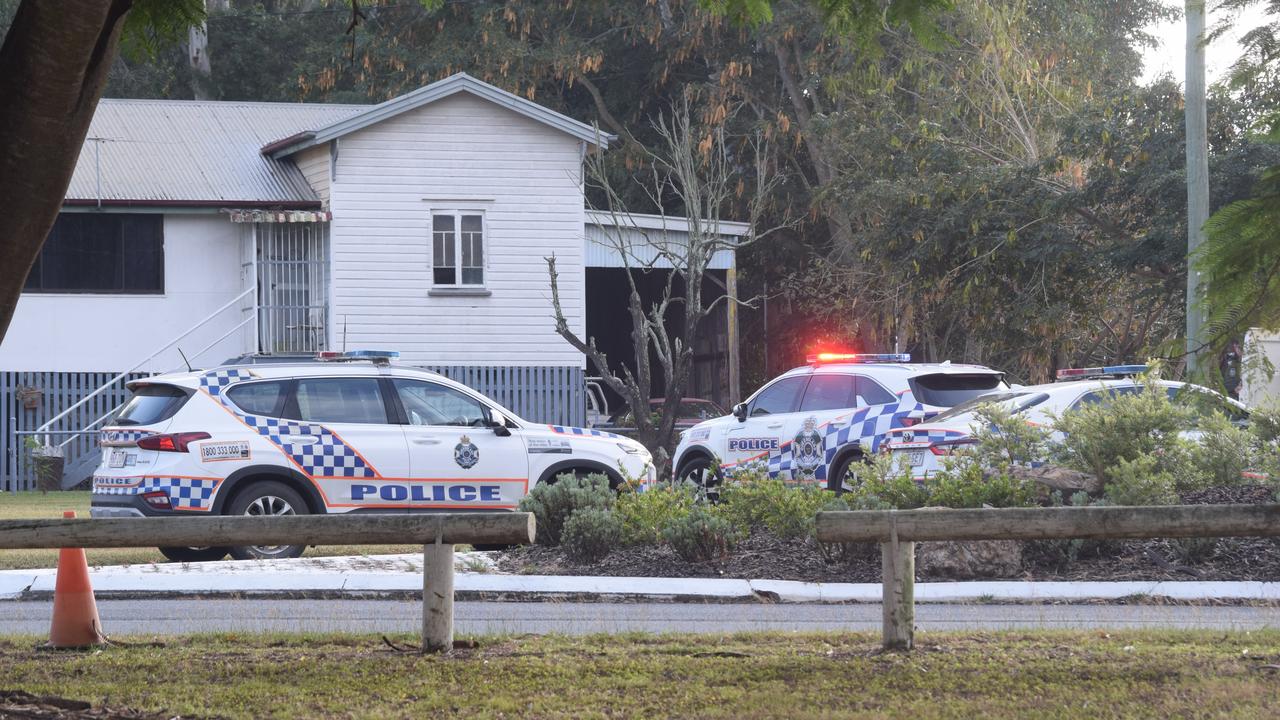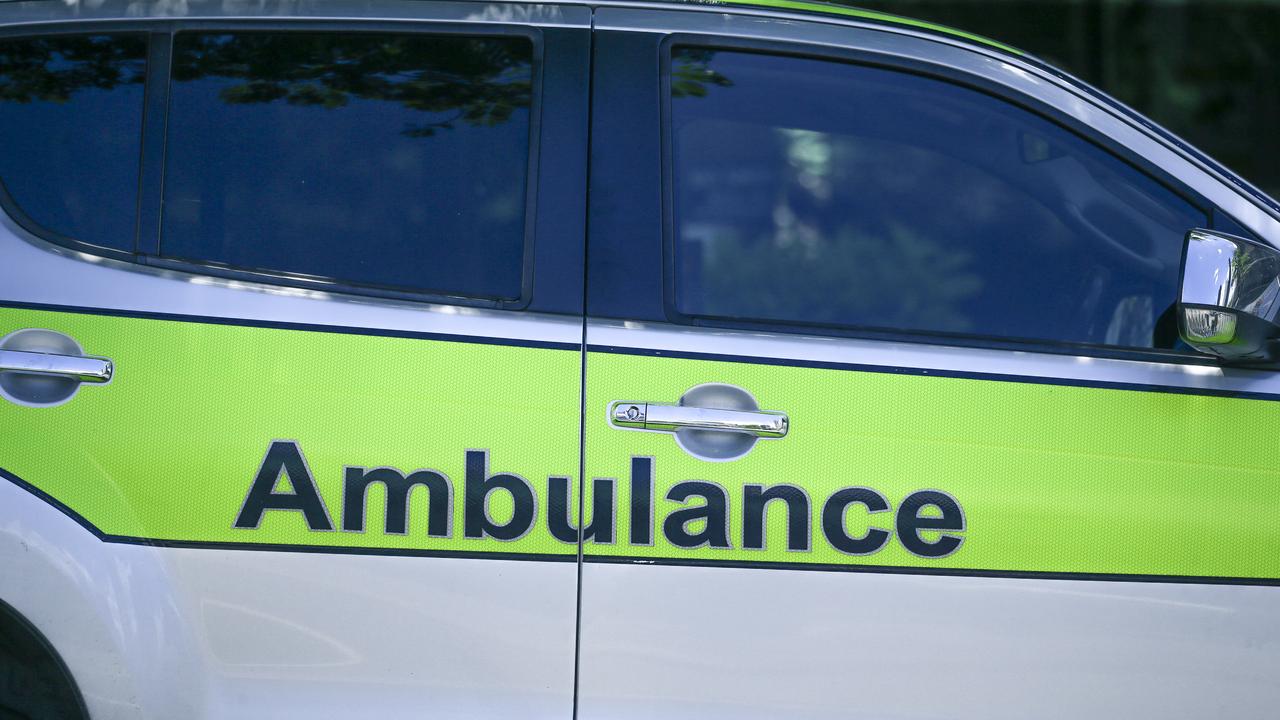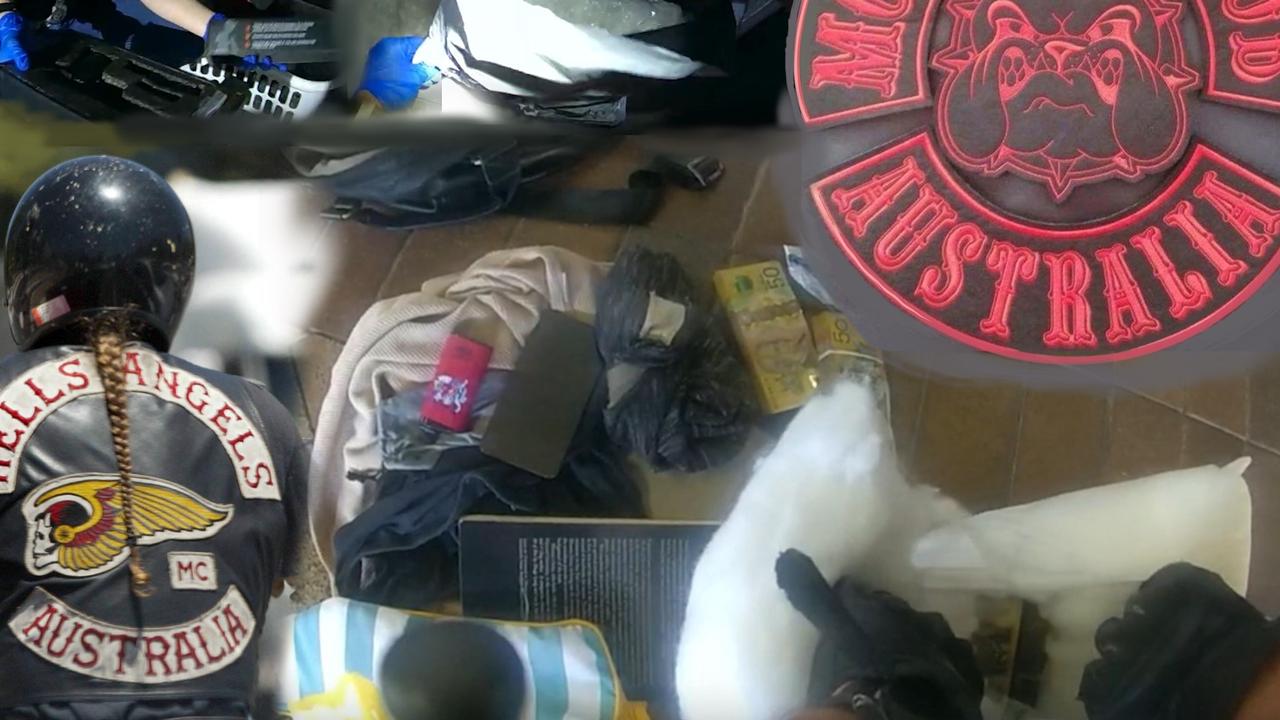Coroner hands down findings into Rockhampton death in custody
Moments after being arrested, a Central Queensland man was dead in the back of a police car. Now, the state’s Coroner has revealed changes he believes are needed.
Police & Courts
Don't miss out on the headlines from Police & Courts. Followed categories will be added to My News.
A man who died in the back of a police car while being driven to a watch-house just metres away probably would not have had a heart attack and died had he been walked across the road like he’d requested.
This confronting finding of Queensland Coroner Terry Ryan was released in a report which also found there was nothing in the Queensland Police Service’s (QPS) policies or procedures preventing officers from granting such a request.
Mr Ryan’s findings came with two major recommendations, including that QPS makes it a mandatory requirement for officers to radio through the health status of a person under arrest before they are transported in a police vehicle “pod”.
The report stems from a three-day inquest into the death of a man, referred to as GLT for legal reasons, who was found in the back of the police pod unconscious, unresponsive and with his face showing blue-purple discolouration in November, 2019.
The September 2022 inquest had heard it was the officers’ decision to transport the man in their pod because they didn’t want to have to run to their vehicle parked in the Leichhardt Hotel’s carpark, from the watch-house if they had an urgent call out.
Police had been sent to the hotel for a welfare check after GLT called police twice.
In the second call, he said someone followed him and wanted to kill him, and $5000 was stolen.
When Constable Sarah Ryan and Constable Jade Traynor arrived, GLT told police he was staying at the hotel but was scared and needed somewhere to stay.
He said someone he knew might have a crocodile in their room.
The 193cm, slightly obese man also asked if Const Traynor was “really a copper” and if she knew the “secret handshake”.
GLT was arrested after two other officers, Constable Dale Lally and Constable Laura Tome, arrived to help them because of incidences of violence in GLT’s history, including towards police.
Police did not cuff him and he was compliant until moments after he was seated in the back of a pod, with one foot sticking out to prevent the door from closing.
GLT asked to be walked over to the watch-house instead of in the back of the police vehicle, however Const Lally told GLT he had to travel in the pod in case the police needed their car to leave urgently.
GLT told police he did not feel safe.
FEAR, EXHAUSTION – NOT DRUGS
Queensland Ambulance Service medical director Dr Stephen Rashford, gave evidence about what happened the night of November 8, 2019.
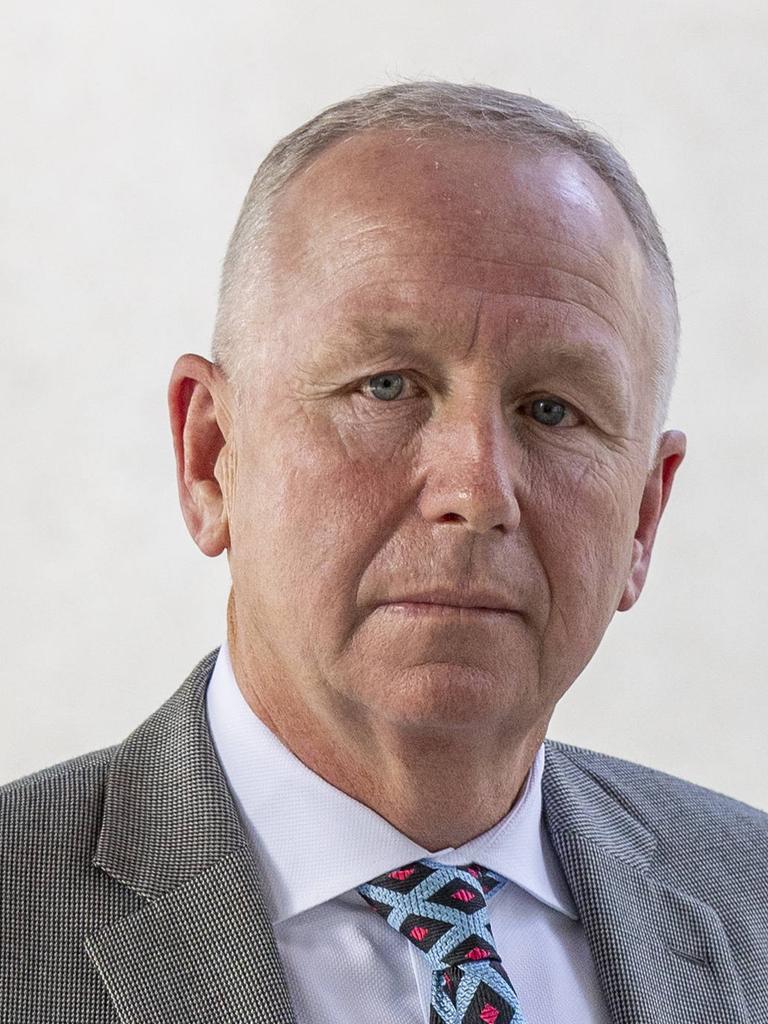
Body warn footage of the incident played at the inquest showed GLT exit the pod, stand up on a step at the back and tower over the police officers who tried to get him back in.
There was a struggle which ended up on the ground, with police observing GLT grabbing for items multiple times, including Const Lally’s firearm.
Snippets of the struggle could be seen and GLT’s repeated shouts of “help me” and “murder”, along with “you aren’t real cops” could be heard.
The struggle lasted five to seven minutes and was described by Dr Rashford as “significantly exhausting” between the man and the police officers.
During the arrest, the inquest heard one officer used both hands to push GLT’s head to the ground so police could gain control and handcuff him, with Const Lally saying, “Can someone apply some serious pressure to the back of his head. We need to get some control”.
Another officer who arrived to help, Senior Constable Renzo Martinez, placed a knee towards the top of GLT’s upper back, near where the back and shoulder connect to the base of the spine, the inquest also heard.
Two sets of linked handcuffs were required because of GLT’s size.
After restraining GLT, the officers aided him up off the ground and walked him to the pod, with GLT dropping to his knees at one point and officers noting he was moving slower and speaking less.
At the pod, GLT fell forwards into the pod and his body hit the back of the pod with a loud bang.
The bodycam footage shows the officers then laughed before two officers assisted him in sitting and facing out of the pod before pushing him back into the pod so his legs were inside.
Police left him lying on his right side and hands cuffed behind him.
Dr Rashford was confident GLT suffered cardiac arrest before arriving at the watch-house.
When Snr Const Martinez opened the pod at the watchhouse, GLT appeared to have not moved since the pod door was closed across the road, and the officer tried to physically rouse him and encourage him to get out.
“I remember talking to him, telling him that we were at the watchhouse and to get out,” he told the inquest.
“There was no response.”
Snr Const described GLT’s face as “bluey-purple” and Const Traynor said, “Oh my god, he does not look well”.
The officers pulled him out of the pod to perform CPR after calling the QAS.
Dr Rashford said it was important to note police had not meaningfully identified GLT’s clinical decline up until this point.
Senior Staff Specialist Forensic Pathologist Dr Rohan Samarasinghe, who carried out the autopsy on GLT, determined the cause of death was the combined effects of meth and “significant pre-existing cardiovascular risk factors”.
Ethical Standards Command’s Detective Sergeant Neil Parker, who investigated the incident and prepared a report for the coroner on behalf of the Queensland Police Service, did not find any of the officers failed QPS policies or procedures, and counsel assisting the coroner, Julie Pietzner-Hagan, submitted the same, and that there were no indicators of unnecessary violence or wilful disregard for GLT’s welfare.
Det Sgt Parker concluded there was no evidence to support criminal prosecution, discipline or misconduct against the officers.
‘THIS IS NOT A NEW ISSUE:’ CORONER
Mr Ryan said GLT should not have been placed in the pod for transport and police failed to recognise his deterioration, with him going unmonitored.
“This is not a new issue and a number of previous inquests have touched on this issue,” Mr Ryan said.
“The problem appears to be two-fold.
“Officers were not capable of recognising the signs of rapid deterioration (which is a broader training issue).
“They also have substandard equipment available to them to enable them to comply with policy.”
The inquest heard there was no camera or electronic monitoring equipment in the pod, which Mr Ryan deemed “a deficiency in equipment and is a significant public safety issue”.
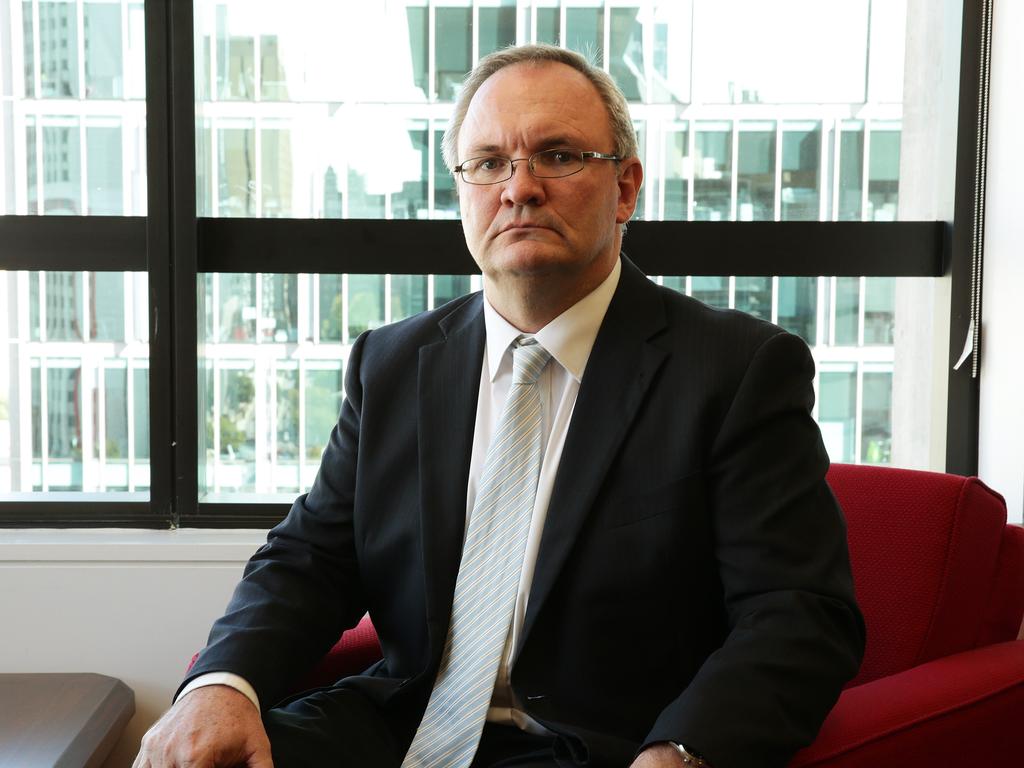
MONITORING PRISONERS IN QPS VEHICLES
One of the two recommendations Mr Ryan handed down was that QPS introduce a mandatory requirement for officers to provide radio confirmation of the health status of a person under arrest before they are transported in a pod.
Mr Ryan said it was “not unreasonable to expect that professional police officers should be actively monitoring persons under arrest for signs of distress and reduced levels of consciousness after a physical altercation, particularly before the person is placed in a secure pod for transport”.
QPS Fleet Director Andrew Quinlan, in a statement provided to the Coroner, said after a six-month trial in the Fortitude Valley and the Gold Coast where CCTV was fitted to a Toyota HiAce van with a two-way intercom communication system, QPS was fitting out the rest of its fleet with a similar system.
However, as of September 2022, only nine of 14 Mercedes Sprinter vehicles used to transport prisoners from watch houses to prisons had been monitoring equipment fitted.
‘EXCITED DELERIUM’ – THE BROADER TRAINING ISSUE
A term adopted in the 1980s by police services across the globe used to identify offenders who were likely under the influence of drugs, restrained and likely to die in custody, was identified during the inquest as a potential problem in aiding police officers to determine whether a detainee required medical treatment.
The officers involved in GLT’s arrest were all questioned about what happened that night, with most stating they thought GLT was intoxicated with illicit drugs.
GLT’s autopsy found he had methamphetamines and amphetamines in his system at the time of death.
Operational Training Services manager Inspector Anthony Buxton at the inquest explained a new training system developed by QAS and QPS, in response to many earlier coronial recommendations, which includes a component about Post Arrest Collapse and the application of Custody and Arrest Risk Evaluation (CARE) Guide.
It was earmarked for the annual compulsory Operational Skills Training for all police up to the rank of Superintendent in 2023/2024.
Mr Ryan’s other recommendation was that the QPS review the use of terms such as ‘excited delirium’ and ‘positional asphyxia’ within its policies and procedures, in consultation with QAS, to ensure the terminology used is accurate and reflects ‘best medical practice.
More Coverage
Originally published as Coroner hands down findings into Rockhampton death in custody




